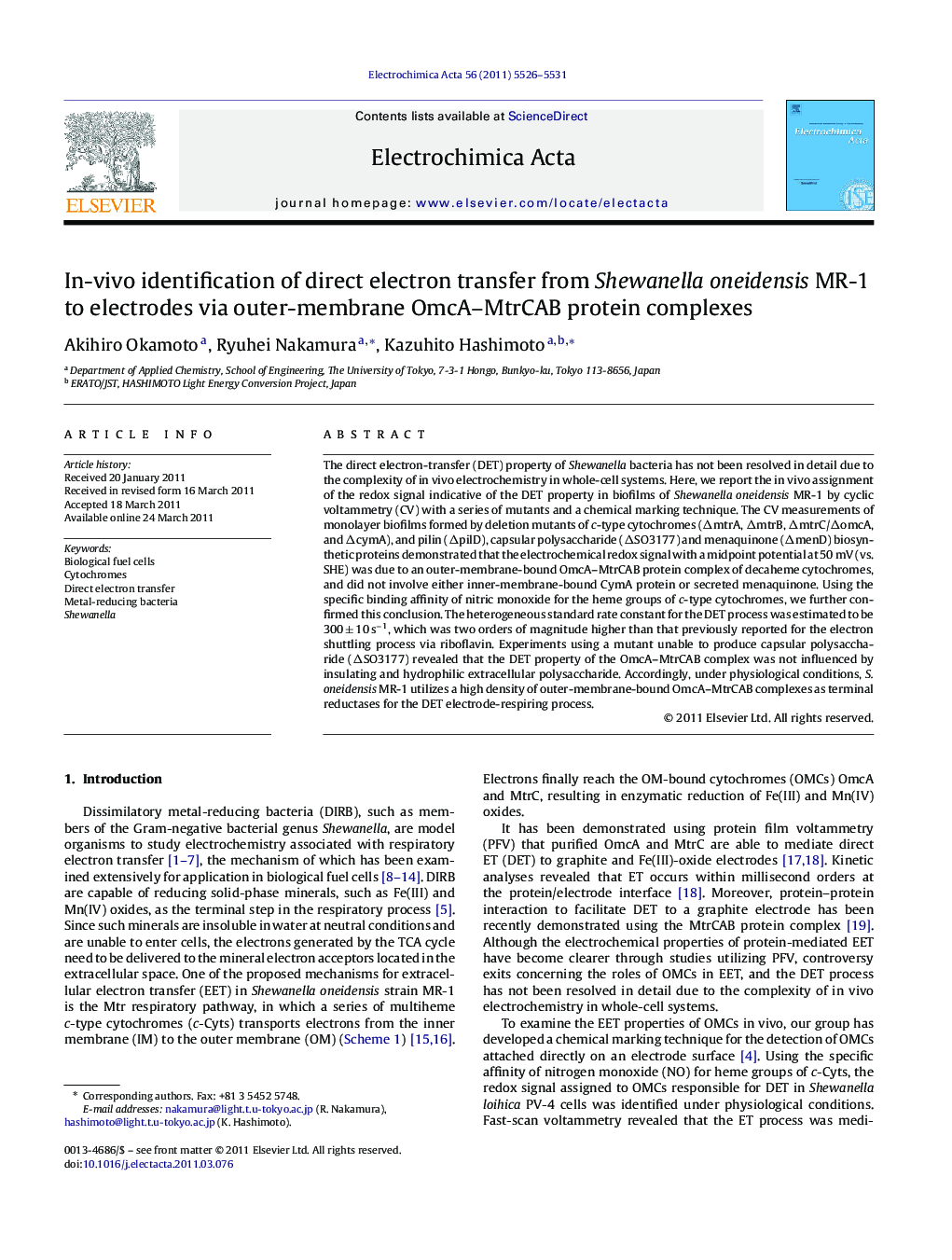| کد مقاله | کد نشریه | سال انتشار | مقاله انگلیسی | نسخه تمام متن |
|---|---|---|---|---|
| 189478 | 459680 | 2011 | 6 صفحه PDF | دانلود رایگان |

The direct electron-transfer (DET) property of Shewanella bacteria has not been resolved in detail due to the complexity of in vivo electrochemistry in whole-cell systems. Here, we report the in vivo assignment of the redox signal indicative of the DET property in biofilms of Shewanella oneidensis MR-1 by cyclic voltammetry (CV) with a series of mutants and a chemical marking technique. The CV measurements of monolayer biofilms formed by deletion mutants of c-type cytochromes (ΔmtrA, ΔmtrB, ΔmtrC/ΔomcA, and ΔcymA), and pilin (ΔpilD), capsular polysaccharide (ΔSO3177) and menaquinone (ΔmenD) biosynthetic proteins demonstrated that the electrochemical redox signal with a midpoint potential at 50 mV (vs. SHE) was due to an outer-membrane-bound OmcA–MtrCAB protein complex of decaheme cytochromes, and did not involve either inner-membrane-bound CymA protein or secreted menaquinone. Using the specific binding affinity of nitric monoxide for the heme groups of c-type cytochromes, we further confirmed this conclusion. The heterogeneous standard rate constant for the DET process was estimated to be 300 ± 10 s−1, which was two orders of magnitude higher than that previously reported for the electron shuttling process via riboflavin. Experiments using a mutant unable to produce capsular polysaccharide (ΔSO3177) revealed that the DET property of the OmcA–MtrCAB complex was not influenced by insulating and hydrophilic extracellular polysaccharide. Accordingly, under physiological conditions, S. oneidensis MR-1 utilizes a high density of outer-membrane-bound OmcA–MtrCAB complexes as terminal reductases for the DET electrode-respiring process.
.Figure optionsDownload as PowerPoint slideHighlights
► Monolayer biofilm of Shewanella cells was prepared on an ITO electrode.
► Extracellular electron transfer (EET) process was examined with series of mutants.
► Direct ET was confirmed with outer-membrane-bound OmcA–MtrCAB complex.
► The EET process was not prominently influenced by capsular polysaccharide.
Journal: Electrochimica Acta - Volume 56, Issue 16, 30 June 2011, Pages 5526–5531